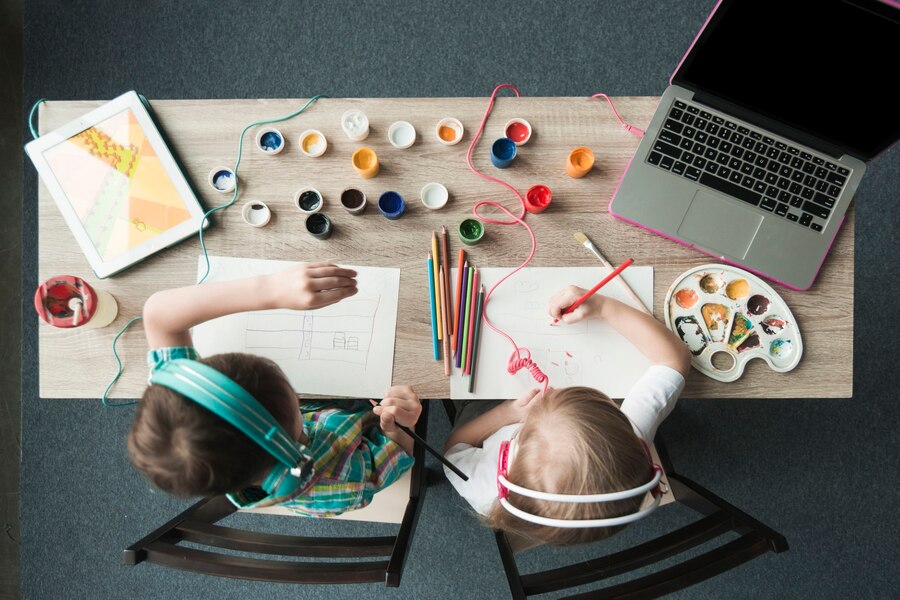
Fostering Creativity and Imagination in Young Children

Introduction to Creativity in Children
Creativity is a pivotal skill that influences a child’s holistic development, helping them think outside the box, solve problems creatively, and adapt to changing scenarios. Recognizing the importance of nurturing creativity in children is essential for their emotional, social, and cognitive growth. In this article, we will explore various activities and strategies that parents and educators can use to effectively foster creativity and imagination in young children.

Encouraging Creativity Through Play
Different Types of Play That Enhance Creativity
Play is the natural medium through which children explore and understand the world. Engaging in different types of play can significantly boost creativity in children. Constructive play, such as building with blocks, encourages problem-solving, while imaginative play, such as pretend games, supports narrative skills and empathy.
Examples of Play Activities that Promote Creative Thinking
Creating scenarios where children lead the play activities, such as pretending to be on a space mission, helps develop leadership skills and fosters creativity in decision-making and problem-solving.
Creative Arts and Crafts
Easy and Fun Arts and Crafts Projects
Simple projects like DIY masks, homemade playdough sculptures, and watercolor paintings encourage children to express their unique visions, enhancing creativity in children by allowing them to explore various textures, colors, and forms.
How Arts Influence Creativity in Children
Engaging in arts and crafts provides sensory experiences that are vital in developing fine motor skills and cognitive abilities, laying a foundation for creative thought processes in young minds.
Storytelling and Dramatic Play
Benefits of Storytelling and Role-Playing
Storytelling and dramatic play are instrumental in developing language skills and the ability to sequence events. These activities encourage creativity in children by allowing them to explore different perspectives and cultivate their narrative abilities.
Guiding Children to Create Their Own Stories
By using open-ended questions in storytelling sessions, children are prompted to think creatively and develop rich imaginations. This practice not only enhances their creativity but also boosts their confidence in expressing their ideas.
Outdoor Play and Nature Exploration
How Nature Influences Creativity
Interactions with nature stimulate curiosity and inspire creativity in children. Outdoor activities encourage children to think creatively when solving problems like building a bridge across a small stream or creating a leaf collage.
Activities that Encourage Outdoor Creativity
Organizing nature scavenger hunts or building fairy gardens are excellent ways to nurture creativity and teach children about the natural world.
Music and Dance
Incorporating Music and Dance in Daily Activities
Music and dance are powerful expressions that enrich the learning environment and foster creativity in children. They offer ways to express emotions and build neural connections that support creative thinking.
Music, Movement, and Brain Development
Active engagement with music and movement activities can enhance auditory discrimination and motor coordination, which are crucial for cognitive development and creative thinking.
Technology and Creativity
Safe Use of Technology in Creative Development
While technology should be used judiciously, it can also be a powerful tool in promoting creativity. Educational apps that allow children to create art or music can enhance their creative skills.
Apps and Tools That Support Creative Expression
Choosing apps that provide open-ended, creative activities rather than passive interactions can help develop creativity in children, making technology a useful ally in creative education.
Creating a Creative Home Environment
Designing Spaces at Home That Inspire Creativity
A creative space at home should be accessible and inviting, filled with materials that encourage creative expression such as paper, crayons, fabric, and recyclable materials.
Materials and Resources Every Creative Space Should Have
Ensure that the creative space is stocked with a variety of materials that are safe and age-appropriate, enabling children to explore and express their creative ideas freely.
Challenges and Support
Common Challenges in Fostering Creativity
One of the primary challenges in nurturing creativity in children is the over-scheduling of structured activities which can stifle creative freedom and spontaneous play.
How to Overcome These Challenges
Balancing structured activities with ample free time is essential for developing creativity. Encourage unstructured play and provide opportunities for exploration and self-expression.
Creativity-Focused Education
What to Look for in Schools and Programs Focusing on Creative Development
Seek out educational programs that prioritize creativity through project-based learning and provide various opportunities for creative expression across different mediums.
How Educational Policies Can Support Creativity in Children
Advocacy for educational policies that emphasize creativity as a fundamental educational objective ensures that creativity in children is nurtured through systematic and sustained efforts.
FAQs About Fostering Creativity in Children
- How can I encourage creativity in my child at home?
- What role does creativity play in education?
- How does play foster creativity in children?
- What are some signs that a child is creatively gifted?
- How do arts and crafts affect a child’s development?
- Are there any specific tools or resources recommended for enhancing creativity in children?
Conclusion
Fostering creativity in children is not just about providing them with the right tools or activities; it’s about creating an environment that encourages free thought, curiosity, and the joy of discovering new things. By integrating creative activities into daily routines and supporting creative expressions, parents and educators can significantly contribute to the overall development of their children, preparing them for a dynamic and innovative future.
Read Also:
The Role of Music in Child Development